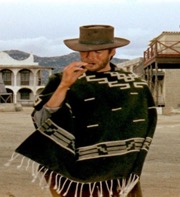
Sometime in the late fifties, as a 10-year-old child in what was then known as Calcutta (now Kolkata), I wandered around in the neighbourhood I grew up in and would stop at a books and comics store, which was nothing but an array of shelves on a wall along one of the side streets. The owner was a Muslim man with a long beard. He had paperbacks and lots of comic books neatly arranged. He loaned them out for about 10 paise per copy with a one-rupee deposit, as far as I can remember. At the end of the day, he used tin folding doors to cover the shelves and would padlock each door one by one. That was the book store. Flat against an alley wall.
I was mainly interested in Classics Illustrated as well as Dell Comics. Much later, in Montréal, my children often scoffed at me after they guessed that I may not have actually read the real classics (as I insisted they do) and had instead opted for the comic book versions. I did enjoy reading A Tale of Two Cities, The War of the Worlds, Les Miserables, The Prisoner of Zenda, Huckleberry Finn, The Three Musketeers, The Scarlet Pimpernel, The Last of the Mohicans, Gulliver’s Travels, and even Sherlock Holmes thrillers like A Study in Scarlet, in their illustrated versions. They were vivid, their dialogue poignant and specific. Being 10 years old, I found the world needed heroes and heroines, people who could escape from confinement and come back and assure themselves and their community of justice. And concise, sequenced story-telling was very satisfying.
As I reached my early teens, however, my main interest was in the American cowboy-era series like The Rifleman, Gunsmoke, The Lone Ranger, Matt Dillon, Rawhide, The Bounty Hunter, Bonanza, etc. By that time, it was the early sixties. In our building’s compound we would play Cowboys and “Injuns,” mimicking the language in the comic books – “Howdy! Pardner,” “He is loco,” etc. Not only was it totally silly and racist, but we were oblivious of what we were mimicking and were being comically serious about a culture we had no clue about. Essentially, in our subconscious, we were perpetuating the notion of occupying settlers as “pioneers,” who were displacing Indigenous populations and dispensing “justice” without any constitutional authority as such.
Then along came this man with no name.

Large billboards appeared, sometimes two stories high, in the front of cinema halls. Throughout the Dollar trilogy directed by Sergio Leone, with composer Ennio Morricone scoring, this anti-hero character created a sense of a man who spoke very little and appeared and disappeared on horseback, wearing a poncho, picking up the bodies of outlaws (dead or alive) and collecting the bounties on their heads. It was hysterical then and is more so now, to see how cool he was and how people scurried away when he entered town. The music by Morricone enhanced that image. Every step the man took resulted in a grim but exciting sound effect, with cracks of the whip, mournful harmonica wails, church bells and gongs going off ominously, and the occasional didgeridoo. Then he would get off his horse and light his cigar by striking a match off the flashing teeth of a grinning townsman. The actor, of course, was Clint Eastwood, and the grinning man was Eli Wallach. The overall impression created was that in a lawless world, justice could be sought by individuals taking the law into their own hands, collecting the bounty. The films also left a clear message that the “sovereign citizen” was above the law if the situation so required.
The Sovereign Citizen
Before we get into the details of how the concept of the sovereign citizen emerged, there are some other issues that need to be discussed. As a precursor to this sovereignty issue, there is the issue of how the legal profession and the general population sees the law as delivering justice.
Views of the law, particularly the way the legal profession and the population see it, have become crucial to an understanding of the popular culture that surrounds notions of justice and the rule of law. There are many tropes in circulation that frame the way that we think. The continued experimentation with and development of these narrative elements (in film, television, comic books, games, etc.) influence the way popular culture imprints on the collective conscience and transforms vigilante-style justice into a believable “solution” to the crime scene – and by extension to the racial and socio-economic divisions in our society.
And the public is given a one-sided perspective that precludes any semblance of socio-economic analysis or historical reference, which ensues in a transparently binary perspective. It is simplistic and yet horribly contrived. In fact, historical references are purposefully sidelined, often pulverized, and creatively deconstructed.
Examples? The slave trade can be seen as an immigration exercise for cheap labour! The Civil Rights movement and the amended Immigration Act that followed are framed as ill-conceived liberal democratic vote-banking. And, of course, amongst the worst tropes was the one selling the idea that refugees entering the US from the south were stealing jobs, whereas their economies were in fact being destroyed by the Monroe Doctrine, which created some of the worst military dictatorships in history, funded covertly by various US endowments. There was a time when Canada was offended by such politics (or at least pretended to be) and distanced itself from such a perspective. Not so any more. The new administration in Ottawa has taken over the role played by the US with catastrophically failed interventions, as in the case of the Lima Group.
Of course, those who probe further can find the required articles on the internet that go much deeper in understanding economic, geopolitical and cultural biases. But who delves deeper? Only a few. That is why the world is now full of psyop-style counter-narratives, repeated ad nauseum especially by the mainstream media and then regurgitated in popular culture blogs. There are countless counter-opinion blogs, but to navigate through the maze and find them is not easy for the average netizen.
In the next segment, I will be discussing various aspects of understanding the concept of the sovereign citizen. But I would emphasize something else as well, here – the birth, some six or seven hundred years ago, of the notion of Europe as the centre of “civilization,” immediately accompanied by the notion that the rest of the world was a “savage” entity and therefore had to be saved. As an extension of this perspective, along came the notion of American exceptionalism that would establish global political power as a necessity in the ensuing two hundred years or so.
Two Parts to the Discussion
A: Justice and vengeance
Who wields the sword of justice in popular culture?
The “sovereign citizen” theory is a powerful current running through these movements. Its adherents insist that they stand above the law. Some of them refuse to buy vehicle licences, or pay taxes or fines. They believe they are exempt from public health measures, such as lockdowns and vaccine passes. (George Monbiot in The Guardian, Feb. 16, 2022)
There may be some evidence, though, that the database behind the “successes” of the vaccine was manipulated and that the government worked hand-in-glove with the pharma lobby and issued edicts pretending to follow science. The state’s own opaqueness prepared the way for the so-called emergency measures in Canada to be less than popular, and fuelled the frustrations of ordinary citizens.
The confusion reigning in public protests is extraordinarily revealing. As George Monbiot points out:
In other words, (adherents of the sovereign citizen theory) arrogate to themselves sovereign powers that not even the monarch enjoys. They produce elaborate pseudo-legal documents to justify these claims. The “memorandum of understanding” published by two of the leading organizers of the Ottawa blockade, which makes impossible legal demands of the government, looks like a classic of the genre. It was supposedly signed by 320,000 people before the organisers withdrew it.
B: Perceptions of modern law enforcers in popular culture
Not to be undone, the guardians of law and order and their extreme-right adherents and supporters cook up extraordinarily offensive, arrogant and physical consequences of “not obeying the obvious.” So, A is coupled with B and you have the result: a 17-year-old who is driven by his mother to a Black Lives Matter demonstration, armed to the teeth and released into the public with an AR-15, and opens fire. His rancour beforehand and his determination to use violence are considered irrelevant to – or even supportive of – his sovereign citizen rights. He is acquitted as having acted in self-defence. We will not publish his cherubic-faced picture, which has been continuously projected to enable the assertion of his “innocence.”
So, the issue remains one of A and B being combined to develop a C that is essentially a new writ on popular culture. For example, many other aspects are now developing, such as the “reclaiming of whiteness,” which have now become evident with the recent Buffalo domestic terrorism massacre. We are facing a very ominous revival of bounty-hunter culture, coupled with a major rewriting of the history of settlerism.
A complex situation is also emerging, where the existing judicial and constitutional systems are themselves acting prejudicially and thwarting average citizens from exercising certain fundamental rights and freedoms (such as reproductive rights including abortion on demand, and the rights to housing, healthcare and education). And in this melee, extreme right-wing popular culture is seizing centre stage and demanding extra-constitutional rights in a spectacularly “bounty-hunter” style culled from the Old West.
In this process, A and B recede into the background and C, the incoherent anger of frustrated citizens, takes over with mass acts of terror, fully filmed (with cameras strapped to the forehead) and with various versions of anti-Semitic, Islamophobic, xenophobic, racist and white-supremacist acts, one after the other. And then there is vengeance! So, the man with no name – a brutal cool surrounding him – has essentially been revived, with several scores of white men from New Zealand, Norway, across the United States and now Canada as well. Speaking through the dark internet, his clearly outlined manifestos deny and challenge many of the root causes of migrations underway in the world, including the wars that have pushed refugees to cross the Mediterranean and die around the waters of Lampedusa. Incidentally, Morricone was able to incorporate the wails of drowning Africans and others as their boats sank in the Mediterranean, in a poignant soundscape.
If all this sounds like typical left-of-centre jargon, the question is, what are those of you who feel angry and frustrated about the situation doing about it? You can label and you can dismiss, but when are you also going to come out of your comfort zones and make your artwork, your performance, your writings in some way elucidate the plight of the two teachers and nineteen 10-year-olds, their parents, their friends and families in Uvalde?
I do not know if Matthew McConaughey is running for office. I hope he does not. But his recent appearance at a White House briefing is a good sign that Hollywood and all the other ’woods need to understand that gun culture in America has settler roots that must be addressed.
Some 50 years ago, the martyred young leader of the Chicago Black Panthers, Fred Hampton, who was assassinated by the FBI at the age of 21, had this to say: “We got to face some facts – that the masses are poor, that the masses belong to what you call the lower class, and when I talk about the masses, I’m talking about the white masses, I’m talking about the black masses, and the brown masses, and the yellow masses, too.”
Now, when will this frame of mind re-emerge?